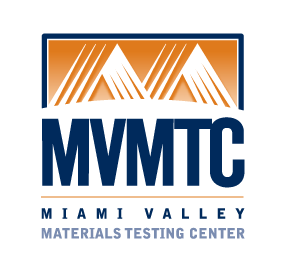
coating characterization
Coatings are applied to a variety of surfaces for aesthetic and/or functional purposes. In general, coatings are used for corrosion resistance, adhesion properties and wear resistance. Coatings are generally applied and then undergo a curing or solidification process. Understanding the capabilities or the coating properties enables engineerings to develop performance-enhancing coatings as well as optimize processing techniques.
MVMTC offers a broad set of coating characterization techniques such as:
Humidity Testing
Similar to salt spray testing, we test the humidity resistance of a coating, substrate or part within a controlled test chamber and evaluate for corrosion and/or blistering.
TEST METHODS: ASTM D2247
Chipping / Impact Resistance
Test the resistance of a coating to chipping damage by using a controlled amount of impact at a specified temperature.
TEST METHODS: ASTM D3170/3170M
Hot Water / Salt Water Resistance
Assess coated substrates for water resistance by submerging them in our hot water or hot salt water bath for a specified period of time.
TEST METHODS: ASTM D870 | Honda HES D2008, D2016, D2021, D2028 | Honda 5100Z-TR0-6001 | 5100Z-3MAA-6000
Filiform Corrosion
Evaluate the corrosion resistance of coatings and their substrates by looking for threadlike filaments that form underneath the coating layer.
TEST METHODS: Honda HES D2021
Accelerated Weathering
Simulate the effect of sunlight and condensation on a variety of substrates using alternating cycles of UV or Xenon exposure and moisture to determine any quantifiable changes.
TEST METHODS: ASTM G90-17
Acid / Alkali / Oil Resistance
Test the relative performance of coating systems to various liquids or solvents at specified intervals and temperatures.
TEST METHODS: ASTM D1308 | Honda HES D2008, D2016, D2021 | Honda 5100Z-TR0-6001 | 5100Z-3MAA-6000
Gasoline Resistance
Test and evaluate coatings, substrates or parts for corrosion resistance using gaseous exposure testing.
TEST METHODS: Honda HES D2016, D2021 | Honda 5100Z-TR0-6001 | 5100Z-3MAA-6000
Pencil Hardness
Also referred to as the Wolff-Wilborn test, we use the various hardness values of graphite pencils to evaluate the hardness of a coating.
TEST METHODS: Honda HES D2021 | Honda 5100Z-TR0-6001 | 5100Z-3MAA-6000
Cyclic Corrosion
By using a variety of cycle durations and corresponding test methods we are able to simulate specific environmental conditions to fit industry performance requirements.
TEST METHODS: ASTM D6899-003
SEM Analysis
Surface evaluation of a substrate that helps identify particle characterization, surface contaminates or causes of material failures.
TEST METHODS: ASTM E1508
Adhesion
Evaluate the adhesion of a coating to different substrates or surface treatments using the tape test.
TEST METHODS: ASTM D3359
Bending Resistance
Evaluate the quality of materials and their coating by testing their ability to resist cracking during one continuous bend.
TEST METHODS: Honda HES D2021
Coating Weight / Thickness
Determining the weight (mass) and thickness of a coating applied to a substrate and evaluating for conformance of material specifications.
TEST METHODS: ASTM B487 | ASTM A90/A90M | ASTM A428/428M
request a quote
Do you have a need for materials testing? Send us a quote request! We would be glad to assist you with all of your materials testing and manufacturing consultation needs.
ADDRESS:
4155 Lisa Drive
Tipp City, Ohio 45371
PHONE: 937.669.4500
FAX: 937.669.4566
